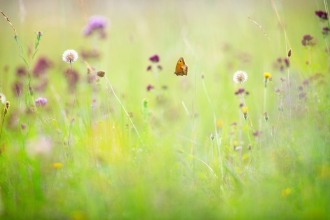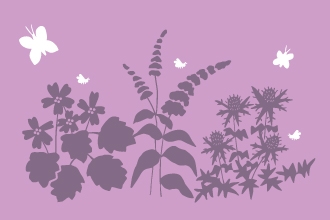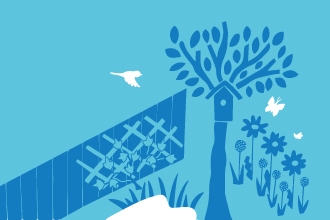What do you picture when you hear the word meadow? Whatever scene you see, it probably has a swathe of colourful flowers, hopefully buzzing with bees and other insects. But it’s a word that can mean different things to different people.
Traditionally, a meadow is a grassy area left to grow until late summer, when it’s cut for hay. Once the hay has been removed, it may be grazed by cattle or sheep until spring, when the animals are moved elsewhere to give plants more freedom to grow.
Grasses shoot up and flowers thrive, creating a beautiful mosaic of colour. As this cycle repeats year on year, meadows become richer with different plants and animals.
Now the word meadow is often used more loosely, applied to any area where grasses and wildflowers are given the opportunity to grow through spring and summer – from pastures to wild patches in our gardens.
Some maintenance is needed, through grazing or strategic mowing, to keep conditions right for a wide variety of flowers. Whatever we call them, grasslands rich with native wildflowers are an essential part of our landscape – and that includes our gardens!








